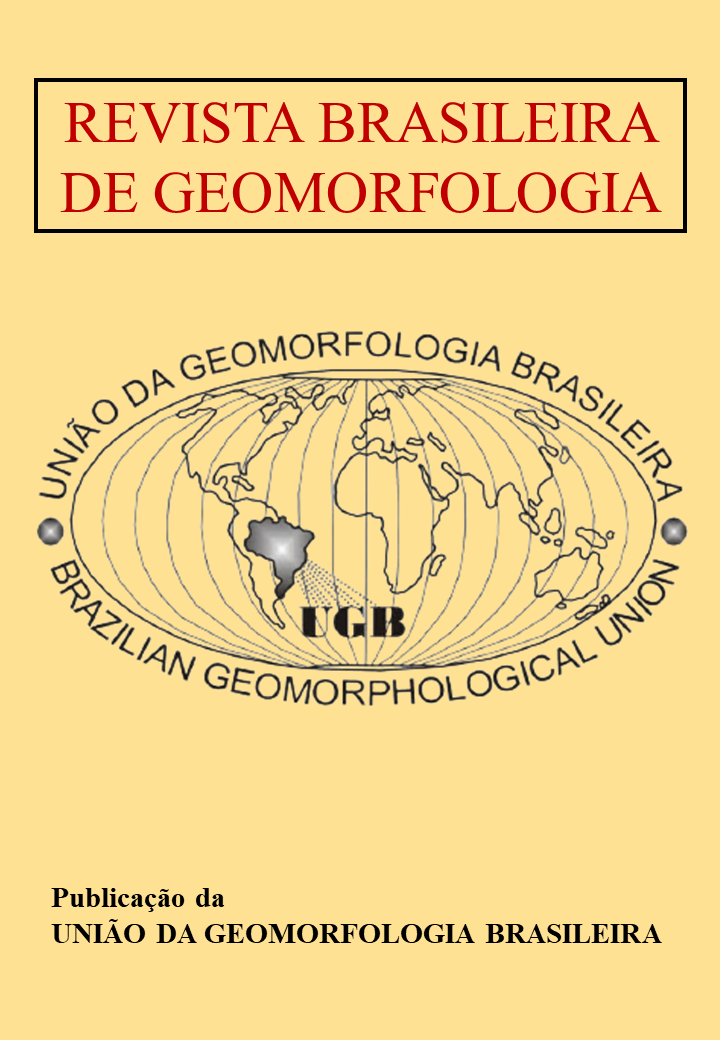Stabilization of water erosion in Anthroposols with bioengineering techniques in the Environmental Protection Area of Timburi, municipality of Presidente Prudente, SP, Brazil
DOI:
https://doi.org/10.20502/rbgeomorfologia.v24i00.2325Keywords:
Landforms, Landform compartments, Geomorphology, Land use, Degraded areas stabilizationAbstract
The landforms are directly related to the initiation of erosion processes, which are part of the dynamics of nature. With the advancement of human actions in different environments on Planet Earth, the concept of a new geological epoch called the Anthropocene has been proposed. In this context, anthropomorphogenesis and the formation of new landscapes are prominent, leading to the emergence and expansion of Anthroposols. This soil class exhibits physical, chemical, and morphological characteristics that differ significantly from the original ones and are more environmentally vulnerable to erosion processes. This article aims to present the work on stabilizing linear erosion processes on two rural properties with ravines and gullies in Anthroposols within the Environmental Protection Area and Sustainable Use of Timburi, in the municipality of Presidente Prudente, SP, Brazil. To achieve this goal, bioengineering techniques in the form of palisade structures were implemented to address linear erosion processes like ravines and gullies. Anthroposols were classified up to the third categorical level based on morphological descriptions and physical and chemical analyses. In the two rural properties where the bioengineering structures were installed, even during months with the highest rainfall, from November to February, in areas classified as having high to very high environmental vulnerability, there was no expansion of erosion sites. This demonstrates the effectiveness of the techniques. Regarding Anthroposols, primarily identified as "Somic," field and laboratory results revealed a high degree of degradation, particularly in chemical soil quality indicators.
Downloads
Downloads
Published
How to Cite
Issue
Section
License

This work is licensed under a Creative Commons Attribution-NonCommercial 4.0 International License.
Author (s) retain copyright and grant the journal right of first publication with the work simultaneously licensed under the Creative Commons Attribution License that allows sharing the work with recognition of its initial publication in this journal.








